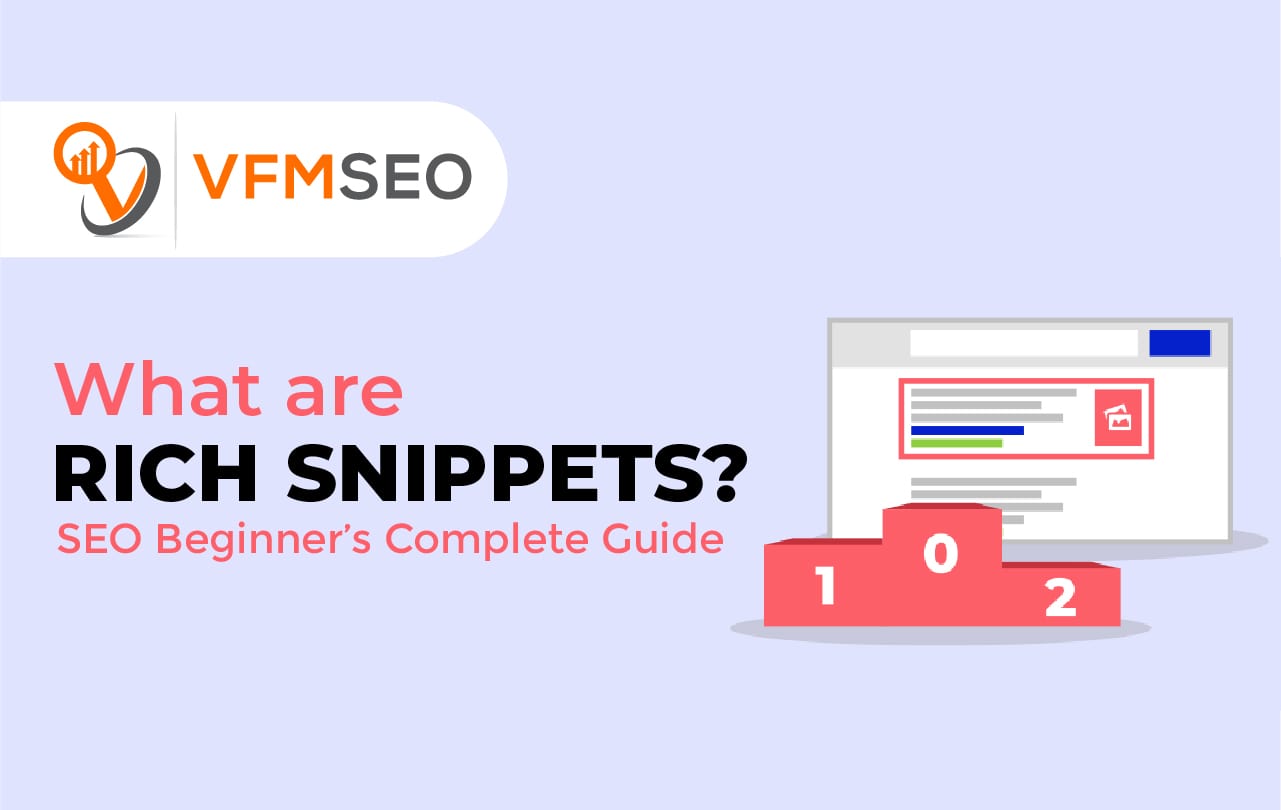
What are Rich Snippets? SEO Beginner’s Complete Guide
Here we are describing the complete guide on rich snippets. Like the canonical tag we recently explained, the use of Rich Snippets (or Schema.org mark-up) is by no means mandatory. Still, it does benefit search engines, users, and, yes, even site operators. The big difference, though, is that, unlike the canonical tag, the advantage is more noticeable to all involved:
- The search engines can return more relevant results.
- Users can determine the relevancy of specific results more efficiently, often on the SERP.
- Site operators may benefit from improved click-through and reduced bounce rates since users have a better idea of the site contents and relevancy to their query before visiting the site.

What Are Rich Snippets?
Rich Snippets is the term used to describe structured data mark-up that site operators can add to their existing HTML, allowing search engines to understand better what information is contained on each web page. However, the major search engines have taken this a step further and now use this markup to present richer search results, enabling users to find the information they are looking for more easily.
Under normal circumstances, when your website shows up on a SERP, Google, and other search engines, display the site title, URL, and whatever Meta description you have allocated to the page. However, when Rich Snippets are employed, Google can show a bit more information about the actual result, including whether this particular result is a review, a person, a product, a business, and more.
Think of how a conclusion for an item on iTunes or Google Play shows up with a star rating, the number of votes that occurred in that rating, the price, and the platform supported.

What Are Content Types Supported?
There are three distinct mark-up specifications currently recognized by the major search engines:
- Microdata
- Microformats
- RDFa
With Microdata being the most broadly supported in terms of annotations, specifically the schema from Schema.org. Open Graph tags and Twitter Cards are a form of structured data mark-up, but they should be used in conjunction with Rich Snippets, not instead of.
Rich Snippets, or structured data mark-up, can be applied to the following content types:
- Reviews – both individual and aggregate reviews are supported, with many properties used for each.
- People – you may have noticed Google and Bing now showing richer data from LinkedIn when you search for sure (well-known) people. Comparable results are possible for any website that includes profiles of staff, team members, and other people relevant to the organization. Supported properties include name, title, role, professional affiliations, and contact information.
- Products – one of the single most essential uses of structured data mark-up is with products and special offers of merchants, particularly online stores. Properties available include name, photo, brand, description, identifiers (ISBN, SKU, etc.), and even reviews, all extendable with rate, currency, seller, and condition, and quantity. Online marketplaces that offer identical products from multiple merchants can use low Prices and high Prices to show the price range for a single item.
- Businesses & Organizations – properties available add business can you buy valium over the counter name, address (physical and URL), telephone number, geolocation (latitude and longitude), and logo.
- Recipes – structured data mark-up for recipes offer a multitude of properties, allowing operators of websites linked to cooking and recipe collections to include everything from the type of dish, reviews, and preparation and cooking time, through to nutritional data such as serving size, calories, fat content and more.
- Events – the usage of structured data mark-up with events is meant only for future events, not past events. It is worth noting that the property summary is not intended for an overview of the event but its official name. Other properties add start and end date, duration, ticket details, and geolocation.
- Music – Bing makes no mention of any support for music, but Google provides structured data mark-up relating to songs and music albums. This can include links to previews of songs and direct links to buying individual tracks or entire albums.
- Video Content – this applies to embedded video content on your website and can be used to indicate duration, license, Production Company, and the creator of the video, and even if the content is family-friendly.

How to Add Rich Snippets to Your Content
Structured data markup does not require to be added to every single content property, though having more content marked up does improve search engines present results better. You should also note that you should only mark-up visible content – hidden page elements and content in hidden divs do not need to be marked up.
Structured data markup makes us of three main elements:
- itemscope – which specifies that the HTML contained in the <div> block is about a particular item,
- itemtype – which indicates precisely what kind of item it is, and
- itemprop – which is the appropriate property, such as name, URL, review, etc.
What to Expect After Adding Rich Snippets
You start utilizing structured data markup on your site will not automatically translate into the major search engines displaying Rich Snippets for your content. Google, in particular, will first analyze and assess your markup before starting to show richer results. Over multiple implementations, Benci has noted a pattern in how Google responds to the intro of structured data markup:
- Google only starts analyzing the new markup 10 to 14 days after introducing it on a website.
- If everything appears to be correct, Google will begin showing Rich Snippets for some (not all) pages, but after approximately five days, these will disappear.
- Several days later, some Rich Snippets will reappear for the same set of pages or a new set. This may be repeated several times.
- Only after roughly eight weeks will you be rewarded with (semi-permanent) Rich Snippets throughout your site, assuming Google’s repeated analysis and assessment did discover any errors.
This cycle often obscures site operators, who then resort to tweaking their implementation of Schema.org, resulting in further delays. Benci’s observations suggest that it is more helpful to implement the markup and wait roughly two months for the full results to start showing up before attempting any modifications to how you have implemented the markup.

